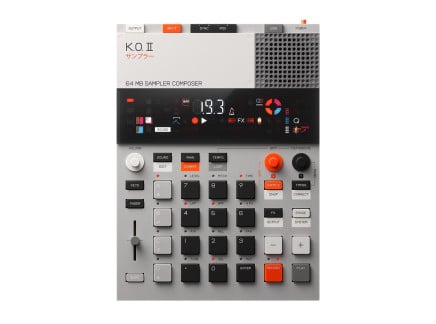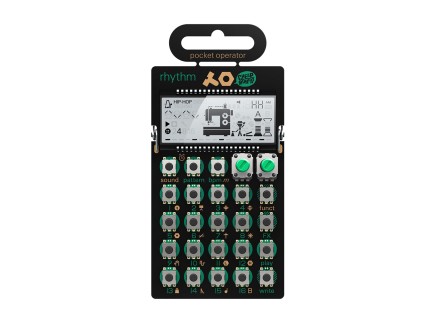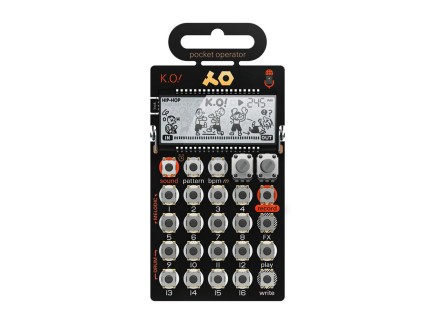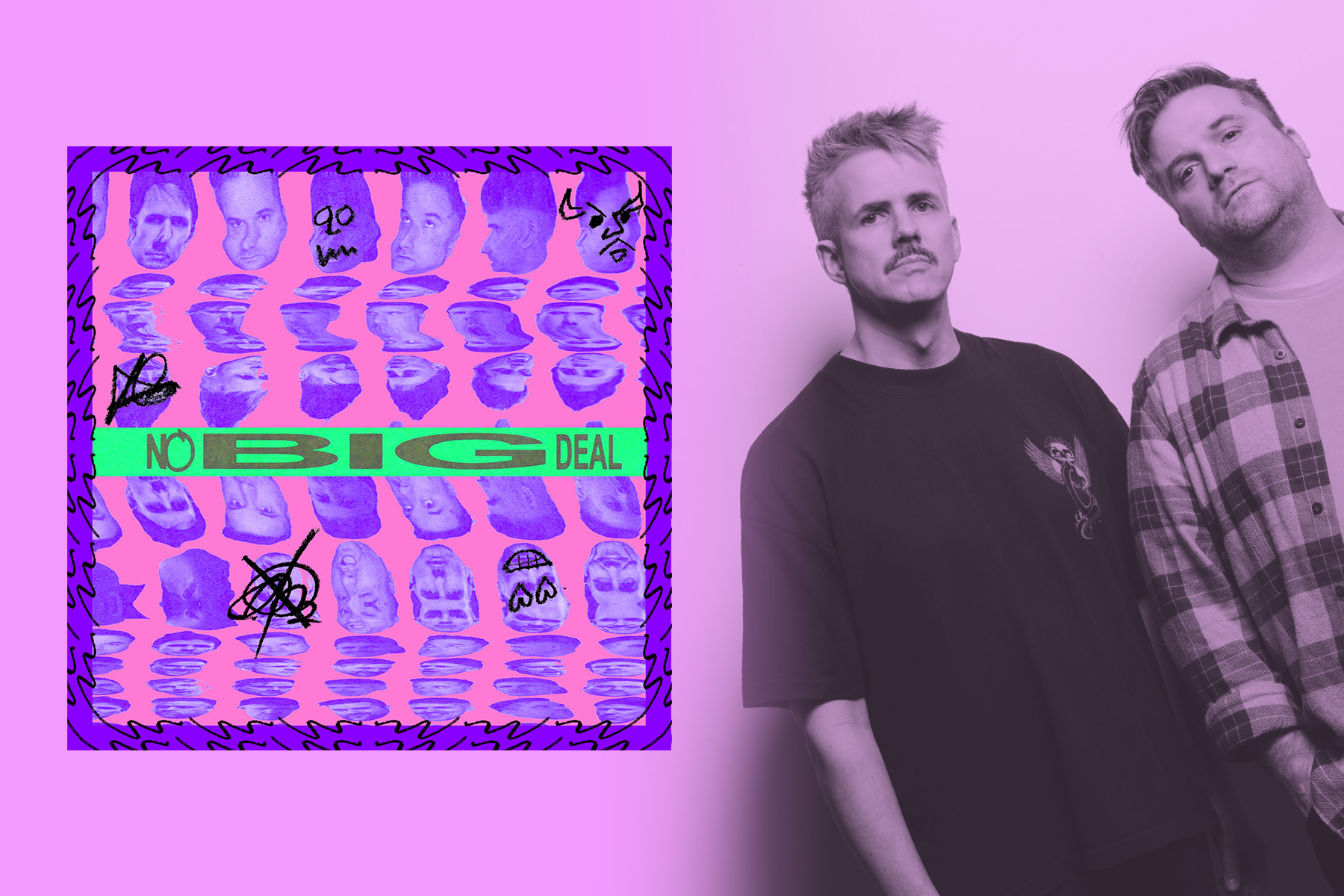Few electronic music instrument designers are able to continually create such a stir as well as teenage engineering. Even from the very beginning with the OP-1 to current offerings like the TX-6, TP-7, and CM-15, you can recognize a teenage engineering device from a mile away. And despite the obvious care and attention placed on the visual aspects of their creations, it's clear that it's not just all style and no substance—all of their instruments are deep, capable, and very creative devices.
Out of everything they've ever made, it's the Pocket Operators that have managed to garner the most universal appeal and usage. Among them, the PO-33 K.O.! was a standout success—after all, who wouldn't have fun with an easy-to-use and instantly gratifying sampler that fits in the palm of your hand? But imagine the PO-33's immediate sampling workflow in a slightly more powerful package, with an amped-up sequencer and more connectivity with your other gear? Well, as of today, you can get that in the EP-133 K.O. II.
Indeed, the K.O. II takes everything that was loved about the PO-33 and adds stereo sampling, more flexible sequencing, and the ability to control and sync external MIDI instruments. Even returning features like punch-in effects have seen improvements, and the EP-133 features an increased emphasis on performing with your music in the moment.
In anticipation of the EP-133's release, we had the opportunity to speak with David Eriksson, one of teenage engineering's founders and lead designer for the K.O. II. From the history of the Pocket Operator line to K.O. II's development and release, David shares with us some key behind-the-scenes knowledge on what makes this release so special.
Road To K.O. II: Pocket Operators and More

[Above: teenage engineering founder and product designer David Eriksson at work on the new EP-133 K.O. II]
Perfect Circuit: Hi David! Thank you so much for talking with us, we're excited about the release of K.O. II! We'd like to first ask you some questions about yourself—you're not only the lead designer of the K.O. II, but also one of teenage engineering's founders. From your perspective, how did teenage engineering first come together? How has your work with the company evolved over the years?
David Eriksson: We actually met and started working together already back in 1999. In the early years we were running a website with small micro-games. Around the same time, we had some early fantasies of making a portable audio swiss army knife—I remember we wanted it to be user-programmable, incorporate a beefy FPGA and a Sony memory stick slot :-) I actually have some color-prints dated same year of what was an embryo of what eventually became reality with OP-1.
We had lots of fun and learnt a few things (and lessons) on how to build things, we met and hired some great people that—after working in other industries, primarily console games—reunited some 10–15 years later at teenage engineering.
I'd say over the years we've constantly developed new platforms, form-factors, user-interfaces, down to spending lots of time digging deep in various manufacturing methods, including designing our own production-line systems.
PC: Before getting into the K.O. II, it makes sense to first spend some time talking about the Pocket Operator line. At the time of their release, the landscape of truly affordable handheld electronic instruments wasn't anything like what it is today. Can you tell us about how the original trio of POs came to be? Were there challenges in bringing the POs to market?
DE: We had a pretty clear idea that we wanted to challenge ourselves to create something affordable and still feature-packed. That same year, we were asked to participate at Moogfest, so we didn't have much time to complete the first iteration, which came without a display and instead of a DAC, we used a 12-bit PWM output for the sound. The result was an open beta release that we gave away for free to people performing there.
This later evolved in the first trio, where each got its own custom LCD and sound palette. we felt that the POs had to be easy to use and do primarily "one thing," like a calculator. Having drums, bass, and melody separated felt great both from an aesthetic point of view, but also made them more user friendly.
PC: Looking back over the last ten years, have you noticed changes in the general perception of the Pocket Operator series as a whole? How have your own feelings evolved?
DE: To me, the most interesting thing with the POs are the fact that they span a large category of users, ages, and genres, and that we also saw a fantastic world around them with people building their own docking systems, cases, etc. And more lately, there has been an incredible amount of good music being made on these, even full albums that have been produced on the PO-33 alone.
PC: Of course, K.O. II is most directly related to the PO-33 K.O.!, which—for us, at least—has been the best-selling Pocket Operator. We can easily see why: melodic and percussive sampling in a portable instrument like this is pretty novel. Do you recall the development process for the PO-33? Where did the idea for PO-33 originally come from? Beyond the obvious feature differences, were there any special considerations in design or process made for this model compared to other POs?
DE: It was a natural upgrade to the first gen POs. We needed to add something, so we put a MEMS microphone and flash storage on there, and of course the first thing that comes to mind is a nice little sampler. The MCU is extremely power-efficient, but that's also a resource constraint which actually adds a layer of creativity in the dev process— having those limitations, trying to squeeze out every last clock cycle of the CPU.
PC: Were you surprised by the original K.O.!'s popularity? Did the success of this model make its approach to straightforward sampling the obvious choice for exploration in future products?
DE: I think the nice thing about samplers are that they become "you," rather than a synth that has a certain sound. you choose what to sample and how to chop it. Also we're all big fans of the work that Roger Linn did with the LM-1 & 2, MPC60 and 3000. Many samplers since became too complex to use, so to me, the reason for creating a new hardware sampler today is more around making a handy instrument with zero boot time, low latency throughout, and a tool you'll learn to master, that encourages you to perform.
EP-133 K.O. II Overview
PC: So, with all that background behind us—let's move on to the star of this interview: the EP-133 K.O. II. The K.O. II seems to occupy a completely new place in the teenage engineering lineup...it exists separately from the Field series, OP-Z, and even the Pocket Operators. What led to developing this instrument as a unique entity rather than incorporating it into an existing product line?
DE: We've never really made a sequencer in this fashion where you have some of the traditional linear MIDI-sequencing combined with convenient groups (or busses if you like) that offer a quick way of building up beats and arrangements without having to worry about how many steps you have available, or making endless variations of your patterns.
It was also important to ensure that it works great with other gear, focusing on performing electronic music live, so the K.O. II has both its internal sampling engine as well as MIDI tracks that you can use to record and control external (MIDI-equipped) synths. It also comes with dedicated sync in/out jacks to allow hooking up Pocket-Operators, Volcas, link with your Eurorack system or sync24 to your vintage Rolands. Basically, its a really good device for those that wanna have a break from their laptop and run things "DAWless."
PC: Despite its unique positioning in your catalog, visually speaking it does look a lot like a bigger Pocket Operator. Was it important to establish this visual lineage during the design process? Similarly, were there intentional distinctions and differences built into the K.O. II to separate it from the Pocket Operators? What are some of the big things that the K.O. II can do that the PO-33 can't?
DE: We knew from the start that we wanted to find a dimension that easily can be carried around together with other things you have in your backpack. Then of course, it was essential to offer a built-in mic and speaker so it works out of the box. We were also certain that the keys had to be bigger, more tactile and offer velocity and pressure sensitivity that we use to add more depth for the punch-in effects.
The biggest difference of the K.O. II to the POs I'd say is its ultra flexible sequencer. We spent lots of time making it jam-friendly, with 4 groups, each with variable length patterns, up to 99 bars if you need it. You can mix and match patterns in each to see what fits best together. Then we have a "commit feature" that is super useful when building your song, it's a bit like an instant "save as," but it allows you to iterate really quickly, commit, add something more, commit again, etc. This builds up a list of "scenes" that allows you to move back and forth between snapshots of 4 groups with 12 pads/patterns each.
We also have lots of instant overlay features, like unquantized recording with the ability to live-quantize notes on the fly while the sequencer is running. There are 12 parameters you can assign to the fader, like pitch, filter, FX send—these can also be recorded as automation into your patterns. Lastly, there is my favorite from our OB-4 speaker: an instant loop region that you can enable on the fly, move it around, and fiddle with the length of it.
Another important aspect was to make the sampling experience friction free. Just instant, record to one or many pads, done! You can chop automatically or by hitting the pads in time to set your in & out points.
PC: While using the K.O. II, it feels like an expanded version of the Pocket Operator workflow. Were there any features from the original that you absolutely knew you wanted to focus on expanding or exploring more deeply in the new version?
DE: For sure the punch-in effects, which basically are a mix of time-domain, audio effects and midi-note scrambling, just an instant way to mess with your track in a fun way.
PC: Does the K.O. II boast any differences in sampling sounds compared to the PO-33, whether in recording length, audio quality, or function?
DE: Yes, the K.O. II can sample in both mono and stereo, 20 seconds up to 999 sample slots, recorded at a high quality of 46kHz.
PC: The K.O. II seems to emphasize live performance techniques, from its assignable fader to gestural PO-style FX processing and velocity-sensitive pads. Was the performance aspect of the K.O. II something that received special attention in the design process?
DE: Yes, this was almost priority #1 for us. Making it live friendly, on its own or with other gear. We have an excellent beta-test group that are used to performing so having them part of the process early was super fun.
[Above: pictures from the EP-133 K.O. II's development; images via David Eriksson]
PC: What is your favorite way to use the K.O. II? Any fun tips or tricks to share as other folks start getting their hands on them?
DE: It's something magical to wire up a set of MIDI synths, each on its own MIDI channel, then dedicate a few pads on the KO to control them.
Another feature our beta users really liked is a little web-utility we made that we call the "ep sample-tool." It allows dragging samples to/from the device to your Mac/PC/Linux in a convenient way.
Also worth mentioning is that you have nine projects in the machine. you switch by holding the main button + a pad (from 1-9) for a little while to switch to another project. This is also how you can switch to another set of our original recorded factory sounds. They each have a very different character, so make sure to listen in on P01 to P05. The rest is left empty for your own sample pleasure.
Future of the K.O. II and the EP Series
PC: teenage engineering has always been great about long-term support for its products through firmware updates, and recently with the OP-1 Field and TX-6 we've seen some sweet new features added in after their initial release. Will this trend continue with the K.O. II?
DE: Lets wait and see! we definitely have our own wish list of a few things we'd like to do.

PC: Beyond the K.O. II itself, tell us about the packaging and accessories surrounding this instrument. teenage engineering has quite a knack for designing the experience around its products, and K.O. II seems particularly special.
DE: It's a boxing theme, so we have a fluffy large sweater, workout-ready melange shorts for the ring, and some bags for the EP itself.
The packaging it comes in actually has the same size as a 10" vinyl. So it fits nicely on a book shelf or next to your record collection.
PC: Perhaps most importantly, who do you consider to be the K.O. II's target audience? Is this for the seasoned Pocket Operator veteran, the total newcomer, or anyone and everyone?
DE: This is the synth for everyone! It could definitely be your first instrument. I have two smaller kids that use it all the time. But it also has enough depth and creative features to appeal to the professionals as well.
PC: Finally, while we don't expect you to reveal all of your secrets today, can we expect more instruments in this style from you and teenage engineering?
DE: Who knows!...but at least we've put the "EP series" tag-line on the packaging!






















